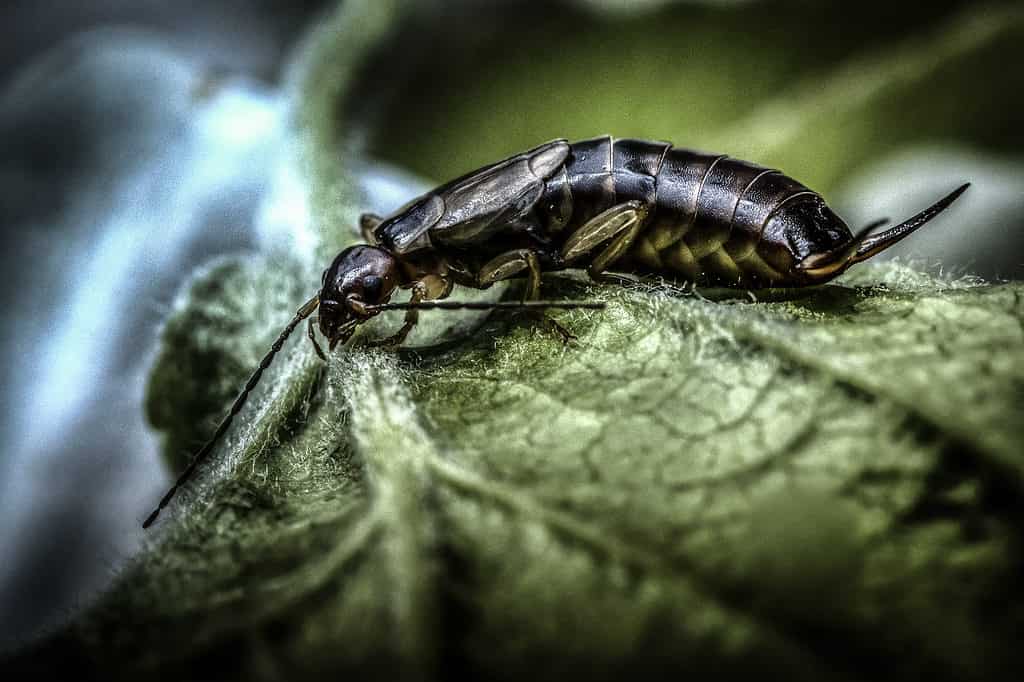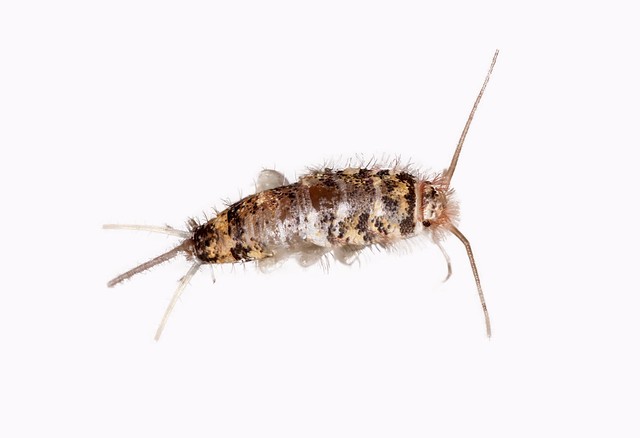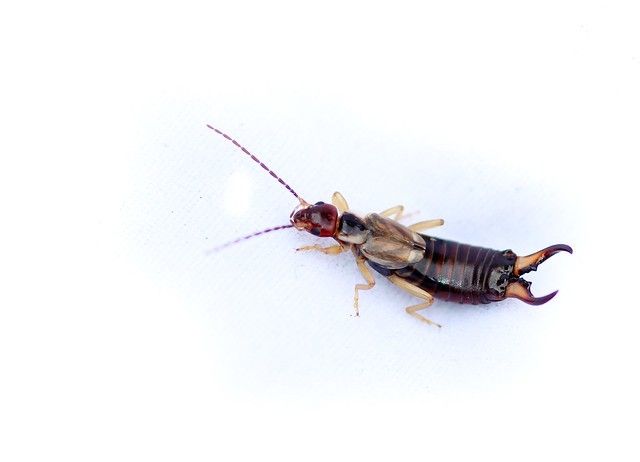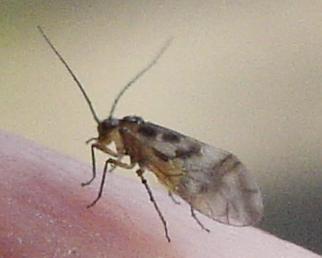A pest infestation is not a fun thing, especially if you don’t know what your home is infested with. You might have silverfish but the problem could be earwigs or firebrats, as well. In order to have the proper treatment and take all the necessary preventive measures, you need to identify the pest, first.
In this article, we will share with you all the most important physical and behavioural characteristics of silverfish and all the bugs that you can mistake them for.
Silverfish are a type of slithering, fish-shaped insect known for their distinctive metallic gray scales and wiggly movements. While many homeowners are familiar with these pests, there are actually a number of other bugs that closely resemble silverfish.
In this article we’ll explore 11 bugs that are often mistaken for silverfish due to similarities in appearance behavior, and habitat. However, upon closer inspection, important differences emerge that set them apart. Learning to distinguish between silverfish and their lookalikes will help you properly identify any unwelcome visitors in your home.
Overview of Silverfish
Before diving into silverfish doppelgangers, let’s quickly review some key facts about silverfish themselves:
-
Appearance Slender, carrot-shaped bodies covered in silvery gray scales They have two long antennae and three bristle-like caudal appendages Typically 0.5 – 1 inch long.
-
Behavior: Nocturnal and quick-moving with a distinctive wiggling motion.
-
Habitat: Prefer warm, humid environments. Often found in bathrooms, basements, kitchens.
-
Diet: Starchy foods like paper, glue, cardboard. Can damage books, photos, fabrics.
-
Risks: Not harmful to humans but can contaminate food. Indicator of excess moisture.
1. Firebrats
Firebrats are close cousins of silverfish within the same order, Zygentoma. They share a very similar appearance and lifestyle:
-
Grayish-brown flattened bodies with long antennae and caudal appendages.
-
Love warm (90°F+), humid places like around boilers and furnaces.
-
Feed on starchy materials like paper, cardboard, and cereals.
-
Curl up into a ball when disturbed.
However, firebrats tend to be smaller (6-12 mm) with stripes along their back. They also prefer even warmer temperatures than silverfish. Check around appliances and pipes if you spot them.
2. Jumping Bristletails
Jumping bristletails earn their name from their incredible leaping abilities using their spring-like caudal appendages. Despite this, they resemble silverfish in many ways:
-
Cylindrical, tapered, fish-like bodies with three long caudal filaments.
-
Covered in detachable scales that aid in water retention.
-
Primitively simple mouthparts.
-
Prehistoric lineage dating back almost 400 million years!
However, bristletails are generally larger (up to 20 mm) and browner. They also inhabit leaf litter and vegetative debris outdoors rather than inside homes.
3. Earwigs
Earwigs are not actually known for crawling into ears, but they do share some similarities with silverfish:
-
Long, flat bodies with a distinctive pair of cerci-like pincers protruding from the rear.
-
Nocturnal habits, often hiding in cracks during the day.
-
Omnivorous diet including both plant and animal matter.
However, earwigs have a brownish rather than silvery appearance. The pincers are used for defense, hunting prey, and caring for offspring. Male earwigs have curvier pincers than females.
4. Centipedes
Centipedes may seem wildly different from silverfish at first glance. But their long, segmented bodies move with a similar smooth, wriggling motion. Other shared traits include:
-
Multiple pairs of legs ripple rhythmically as they walk.
-
Flattened shapes enable them to squeeze into tight spaces.
-
Prefer cool, moist habitats like basements and soil.
However, centipedes have many more legs (15+ pairs) and always have one pair of legs per body segment unlike silverfish. Some tropical centipedes can inflict painful venomous bites, unlike silverfish.
5. Carpet Beetle Larvae
Carpet beetle larvae are often mistaken for silverfish due to their appearance and silverfish-like movements:
-
Elongated, tapered bodies covered in fine hairs or scales.
-
Slow, smooth locomotion with frequent pausing.
-
Feed on starchy materials found in carpets or cabinets.
However, carpet beetle larvae have three pairs of legs rather than six. They also develop into winged adult beetles, unlike silverfish which never grow wings. Controlling them requires locating the pupating adults.
6. Bristletails
This ancient primitive insect resembles a silverfish with an extra-long tail filament. Shared traits include:
-
Cylindrical, tapered, segmented bodies with three caudal appendages.
-
Covered in tiny scales or hair-like bristles.
-
Diets of fungus, algae, decaying plant material.
However, bristletails are typically larger (up to 1 inch) and lack the iconic metallic silvery sheen. Most inhabit leaf litter outdoors rather than human dwellings. Their extra-long filaments help anchor them in place.
7. Springtails
Silverfish and springtails share some surprising similarities considering springtails are only 1-2 mm long:
-
Segmented bodies with silvery scales (sometimes orange or white).
-
Found in damp, humid environments like soil and compost.
-
Can occasionally damage plant roots or seedlings.
However, springtails have an incredible jumping ability using their furcula, unlike silverfish. They also possess only 6 legs and feed on mold and decaying vegetation, making them harmless to humans.
8. Cockroach Nymphs
Cockroach nymphs go through several molts before reaching full adulthood. In early instars, they may resemble silverfish:
-
Pale grayish bodies with long antennae.
-
Quick, skittering movements.
-
Hide in cracks and crevices.
However, nymphs have 3 pairs of legs instead of 6. As they mature, they develop the classic oval cockroach shape and reddish-brown coloration. Controlling an infestation requires addressing all life stages.
9. Campodeid Diplurans
These obscure soil-dwellers have 2 long caudal filaments that lend them a silverfish-esque silhouette:
-
Elongated, cylindrical, segmented bodies.
-
Two thin, hair-like cerci projecting from the rear.
-
Live underground, feeding on humus and organic debris.
However, they completely lack eyes or pigmentation, appearing whitish-translucent. Most are only 2-9 mm in size. Rarely seen above ground except in extremely moist conditions.
10. Lacewing Larvae
Lacewing larvae are ferocious predators, stalking soft-bodied insects with their prominent jaws. Despite this, they share some similarities with more benign silverfish:
-
Flattened, elongated bodies tapered at both ends.
-
Use anchoring caudal filaments to hunt prey.
-
Voracious appetites, sometimes called “aphid lions.”
However, lacewing larvae have just 3 pairs of legs and robust mandibles for seizing other insects. Their alligator-like appearance and habits quickly set them apart from silverfish.
11. Isopods
Terrestrial isopods like pillbugs and woodlice have adapted to live on land. Their segmented silverfish-esque bodies offer clues to their crustacean ancestry:
-
Flattened, oblong silhouette with seven pairs of legs.
-
Grayish-white coloration (also brown, red, or green).
-
Capable of rolling into a defensive ball.
However, isopods have hardy exoskeletons unlike the soft silverfish body. And isopods breathe through gills, requiring damp conditions. Their diverse adaptations enable them to thrive worldwide.
While the silverfish body plan seems to have been an evolutionary success, copied by many other organisms, key differences help distinguish lookalikes. Careful identification and monitoring of suspected silverfish will reveal their true identity – and lead to a more targeted and effective solution. With a discerning eye and integrated pest management, you can keep your home free of any silverfish imposters or the real thing!

Bugs that look like silverfish
 Firebats are the species that is the most similar to silverfish. Their colour varies from grey to brown, with dark spots on the back, while the shape of the body resembles the one of a carrot. They are the same size as silverfish, their small antennae look very similar and they are just as speedy when it comes to running away from something or someone.
Firebats are the species that is the most similar to silverfish. Their colour varies from grey to brown, with dark spots on the back, while the shape of the body resembles the one of a carrot. They are the same size as silverfish, their small antennae look very similar and they are just as speedy when it comes to running away from something or someone.
However, they do have their differences when it comes to their preferred living space. Silverfish like it cold, humid and dark, whereas firebrats enjoy the heat and even thrive in it. Their feet are fire-resistant, giving them the ability to walk on furnaces, boilers and hot water pipes.
So, if you see a bug that looks like a silverfish but is not hiding away from the sizzling sun, then you got yourself a firebrat.
by: Michel Rathwell / License: CC BY 2.0
 Earwigs have many subspecies but their common characteristics are the brownish-red colour of the body, their size varying from 5 to 25mm, and that they love munching on plants and other smaller insects. However, some of them have wings, unlike silverfish. They sneak through cracks in building walls, but they can also attach themselves to furniture, boxes and newspaper that you bring inside. They also dislike hot, dry weather and will search for a dark and humid place to live and procreate.
Earwigs have many subspecies but their common characteristics are the brownish-red colour of the body, their size varying from 5 to 25mm, and that they love munching on plants and other smaller insects. However, some of them have wings, unlike silverfish. They sneak through cracks in building walls, but they can also attach themselves to furniture, boxes and newspaper that you bring inside. They also dislike hot, dry weather and will search for a dark and humid place to live and procreate.
The main physical difference is that silverfish have three appendages starting from their abdomen while earwigs have only two.
 Technically speaking, silverfish are actually a subspecies of Bristletails and they are from the same family. There is a specific type of silverfish that invades people’s homes, try to nest indoors and is often seen by people, while other kinds of bristletails are rarely seen inside and are usually bigger than silverfish, as well.
Technically speaking, silverfish are actually a subspecies of Bristletails and they are from the same family. There is a specific type of silverfish that invades people’s homes, try to nest indoors and is often seen by people, while other kinds of bristletails are rarely seen inside and are usually bigger than silverfish, as well.
 Various subspecies of lice are often mistaken for silverfish due to their grey colour and similar body size. However, this is as close as they go. Booklice and woodlice, for example, aren’t nearly as fast as silverfish and they have different shapes.
Various subspecies of lice are often mistaken for silverfish due to their grey colour and similar body size. However, this is as close as they go. Booklice and woodlice, for example, aren’t nearly as fast as silverfish and they have different shapes.
- The best way to know which pest species keep you company at night is to call a professional pest control technician. They will be able to determine whether you have silverfish or something else by looking at multiple factors and using their years of experience. Read more about our silverfish control service.
- The behaviour of the insect can be just as useful as the physical characteristics in the process of figuring out the exact species.
- Never directly touch an insect and always put on protective wear.
- Some characteristics can only be seen up close.
What does a silverfish look like?
 Silverfish are carrot-shaped, metallic silver-coloured, wingless runners that hate warm weather and love eating your wallpapers. They don’t have wings and their size varies from 13 to 25 mm. You can recognise them by the three bristles that come out from the abdomen. Silverfish do not carry any diseases, they rarely bite people and pets or cause allergic reactions.
Silverfish are carrot-shaped, metallic silver-coloured, wingless runners that hate warm weather and love eating your wallpapers. They don’t have wings and their size varies from 13 to 25 mm. You can recognise them by the three bristles that come out from the abdomen. Silverfish do not carry any diseases, they rarely bite people and pets or cause allergic reactions.
In regards to living habits, silverfish search for dark, humid places where they can live away from predators and procreate. When they are running, the moves slightly resemble those of a fish swimming in the water, which is where they get the name from. Silverfish tend to avoid confrontations and prefer to hide in the gloomy corners of your house, leaving them only to find food. They mainly feed on things that contain either starch or sugar, such as flour, sugar, oats, adhesives, paper, dried-out beef and sometimes, even on other dead insects. They do not hibernate during the winter, so your property can get infested any time of the year. You can often find them in laundry rooms, basements, under sinks, in kitchen cupboards and basically every dark, humid place you have in your house. See what else attracts silverfish in your home.
Trust a reliable service provider with proven quality!
Why You Do Not Want Silverfish in Your Home
FAQ
What bug is mistaken for a silverfish?
Booklice. Various subspecies of lice are often mistaken for silverfish due to their grey colour and similar body size. However, this is as close as they go. Booklice and woodlice, for example, aren’t nearly as fast as silverfish and they have different shapes.
Why am I suddenly seeing silverfish in my house?
SIlverfish get into homes through tiny holes, cracks, and gaps in walls, window frames, doorways, and around pipe openings.Mar 27, 2023
What bug looks like a silverfish but black?
Earwigs: Earwigs also have slightly flattened bodies; however, that’s where the resemblance to silverfish stops. Earwigs are usually black or brown and some have stripes or reddish coloring on their heads and limbs. Earwigs can be anywhere from one-fourth of an inch to one-and-one-fourth inches in length.
Should I be worried if I see silverfish?
Does seeing one silverfish mean an infestation? If you see one silverfish, there is a good chance hundreds are living in your home.
What bugs look like silverfish?
There are nine different home invaders and bugs that look like silverfish. There are many bugs that look like silverfish. Some animals and insects like silverfish include firebrats, woodlice, earwigs, isopods, jumping bristletails, and beetle larvae. Knowing their features will help you identify which is a silverfish. And which just looks like one.
Do springtail bugs resemble silverfish?
There are hundreds of springtail species in the US. Bugs that resemble silverfish have similar physical traits and sometimes other similar characteristics such as movement patterns. These bugs can be silver or gray and they can have segmented bodies.
Are Silverfish a common pest?
Despite being a common household pest, silverfish infestations are often misunderstood. We will analyze the appearance, behavior, and habitat of silverfish, along with the similar traits of other bugs that resemble them, in the ensuing sections.
What is the difference between silverfish and other insects?
Silverfish are a common pest, and they are easily confused with other insects that look similar, live in the same places, or damage your home in the same way. In this article, we’ll look at some other insect species that are similar to silverfish, and how you can tell the difference. 1. There are more than 40 kinds of silverfish in the US alone.
Do stink bugs look like silverfish?
Even without light, the bugs have a pale color that is similar to the color of silverfish. They are usually much smaller though. Unless you have no experience with bugs, you probably won’t confuse stink bugs with silverfish. Stink bugs were native to parts of Asia but found their way to Pennsylvania and later spread across the country.
Do carpet beetles resemble silverfish?
The movements of the larvae resemble the slow lateral movements of silverfish. Carpet larvae are among the most serious pests. Adult carpet beetle lays up to 100 eggs at a time which mature quickly within 10 days. 11. Springtails Springtails are some of the smallest bugs that resemble silverfish.
